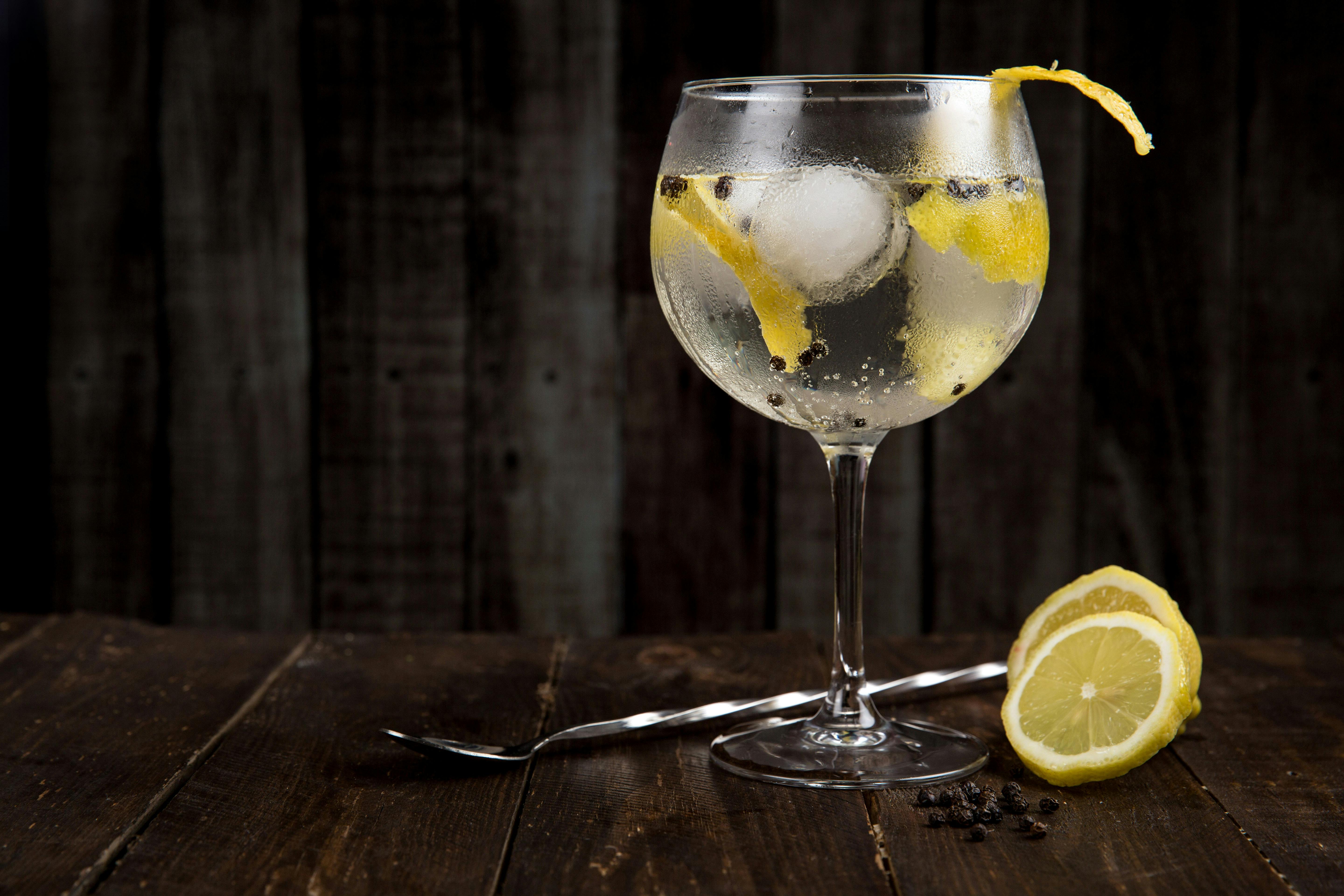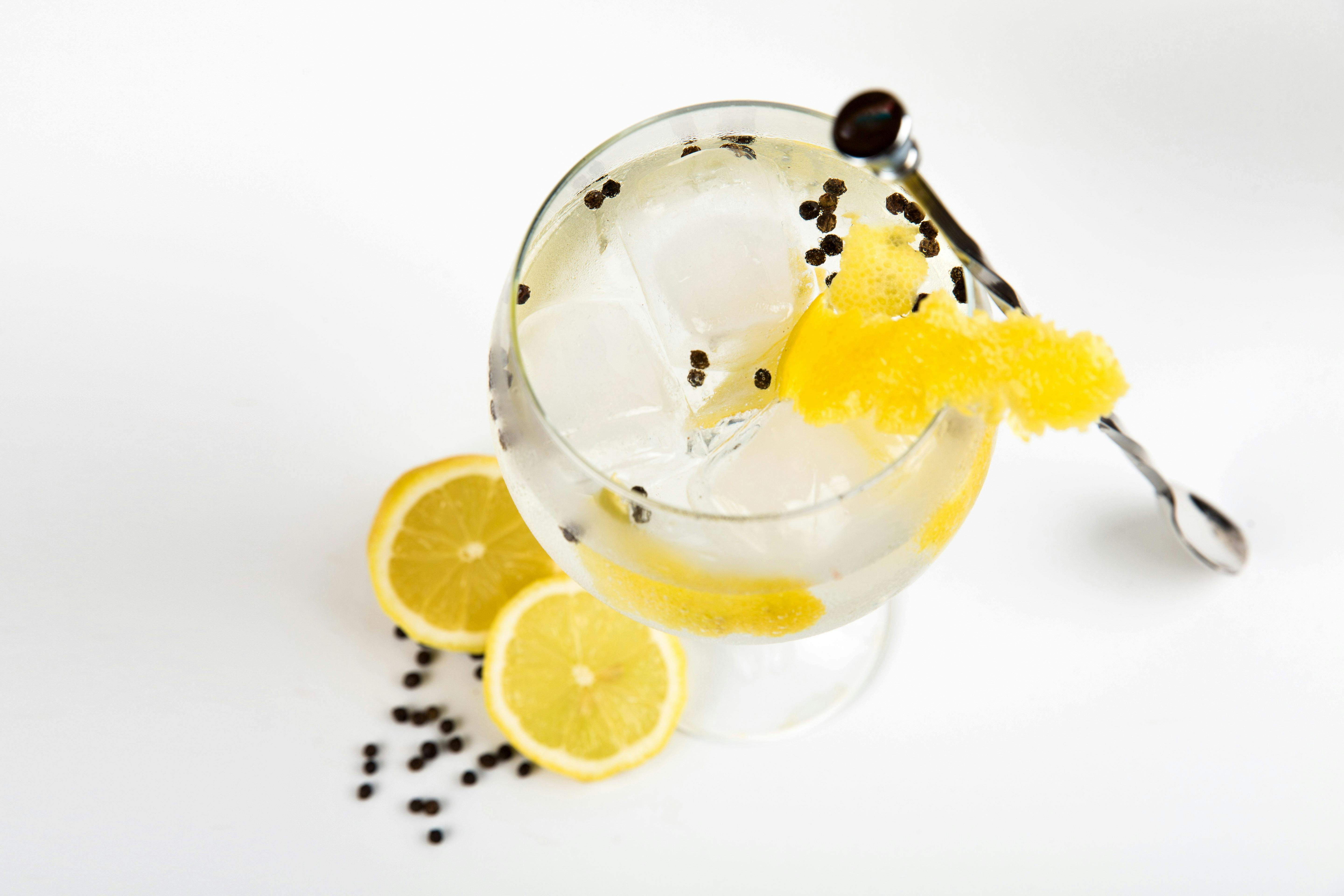Distilled spirits, also known as distilled liquor, are alcoholic beverages produced by distilling fermented natural ingredients. Gin is one of the most popular distilled spirits and is made by distilling a fermented mash of cereal grains, such as wheat or barley, with juniper berries and other botanicals to impart its unique flavor. The botanicals used to make gin vary from brand to brand, but most include juniper berries, coriander seeds, angelica root, orris root, citrus peel, and cassia bark. Distillation removes impurities and concentrates the flavor of the botanicals used in the gin.Gin is a distilled alcoholic drink that is made from juniper berries and a variety of other botanicals. It is typically clear in color and has a distinctively strong flavor. Gin can be enjoyed either as a straight spirit or in a variety of mixed drinks, such as martinis, gimlets, and Tom Collins.
What Are The Ingredients Of Gin?
Gin is an alcoholic spirit made from a base of grain, like barley or corn, that has been distilled with juniper berries and other botanicals. The most common recipe for gin includes juniper berries, coriander seeds, angelica root, licorice root, orange peel, lemon peel and orris root. However, there are many variations on these ingredients which can be used to create different flavors of gin. For instance, some recipes might include spices such as cinnamon or cardamom to give the spirit a more complex flavor profile. Other recipes might use herbs like rosemary or thyme to give the gin a more earthy taste. Additionally, some gins may be flavored with fruits such as raspberry or peach in order to create a sweeter finish.
No matter which ingredients are used to make gin, it must contain juniper berries in order for it to be legally classified as a gin. Juniper berries have been used in the production of gin for centuries and have become synonymous with the spirit itself. The other botanicals included in the recipe will determine what type of gin is being produced
Distillation
Distillation is a process used to separate components of a mixture based on differences in their boiling points. This process involves heating the mixture until it reaches its boiling point, at which point the individual components vaporize and can be collected separately. Once the vapors have been collected, they can then be condensed and returned to their liquid state. Distillation is a common technique in many industries, such as oil refining, chemical production, and beverage production. It is also used for purifying water, extracting essential oils from plants, and separating alcohol from other liquids.
The distillation process works by taking advantage of the fact that different compounds have different boiling points. When heated, these compounds will vaporize at different temperatures. For example, when an ethanol-water mixture is heated, ethanol will vaporize first at 78 degrees Celsius while water will vaporize at 100 degrees Celsius. By collecting the vapors separately as they are released from the mixture and then cooling them back to their liquid state, it is possible to isolate each component of the mixture.
Distillation has been used for centuries for many purposes including purification of water and
What Is A Distillery?
A distillery is a facility where alcoholic beverages such as whiskey, vodka, gin, and rum are produced. The process of distilling involves heating an alcoholic liquid such as wine or beer to separate the alcohol from the other components of the beverage. This process can take place in many different ways, but the most common is through a still which uses heat to vaporize the alcohol. Once the vaporized alcohol passes through a condenser it cools and becomes liquid again, resulting in a higher concentration of alcohol than what was originally present in the beverage.
At a distillery, this concentrated form of alcohol is then stored in oak barrels and aged for several years to develop its flavor character and color. After aging it can be bottled and sold as whiskey or other types of spirits. The same process can also be used to make non-alcoholic products such as essential oils or vinegar.
Distilleries come in all shapes and sizes, from large industrial operations that produce large quantities of spirits to small craft distilleries that specialize in producing smaller batches for specialty markets. Regardless of size, each distillery
How Does Gin Get Its Flavor?
Gin is a spirit that is made by distilling fermented grain mash, usually barley, rye, or wheat. This process creates a clear liquid known as a ‘wash’. The wash is then redistilled with juniper berries and other botanicals, such as coriander and angelica root to create the desired flavor profile for the gin. These botanicals are steeped in the wash and then redistilled together to create the final product. The resulting spirit has a distinct flavor of juniper berries with underlying notes of other spices and herbs. The exact combination of botanicals used in the distillation process will determine the final flavor profile of each gin.
Although many gins are made with similar ingredients, there are dozens of different gins on the market today that have unique flavor profiles. This is due to slight variations in ingredients and distillation processes used by different producers. Some gins may be spicier or more floral than others, while others may focus on citrus or herbal notes. All of these flavors come from the combination of juniper berries and other botanicals that are added during the

The Process of Making Gin
Gin is a spirit distilled from grain mash or a neutral spirit, and then flavored with juniper berries and other herbs or botanicals. The process of making gin involves two main steps: distillation and flavoring. Distillation is the process of heating the mash or neutral spirit to separate it into its component parts. This process results in a clear liquid that is then flavored with juniper berries, botanicals, and other ingredients to give it its unique flavor.
The distillation process begins by heating the grain mash (or neutral spirit) in a still. This still can be either pot-distilled or column-distilled depending on the desired result. During this process, the heat causes the alcohol and other volatile compounds to evaporate off while leaving behind impurities such as proteins and carbohydrates. This vapor is then collected in a condenser where it cools down and turns back into liquid form.
Once the distillation process is complete, the gin is ready for flavoring. Depending on the desired flavor profile, different types of botanicals may be used such as
Botanicals Used in Making Gin
Gin is a spirit made from juniper berries and other botanicals. Botanicals are herbs, spices, fruits, and other plant-based ingredients used to flavor gin. Gin producers season their spirits with a variety of botanicals to create unique flavor profiles. Common botanicals used in gin production include juniper berries, coriander seeds, angelica root, citrus peels, cassia bark, orris root, and licorice root.
The amount of each botanical used varies depending on the recipe and desired flavor. The distiller will typically use a combination of botanicals to create a distinct flavor profile for their gin. These combinations can be anything from light citrus notes to more intense herbal flavors. In addition to the flavoring elements of the botanicals, they often add color and aroma to the spirit as well.
The process of making gin begins with maceration – soaking the botanicals in neutral alcohol for several hours or days until they have imparted their flavor into the liquid. Afterward, the liquid is redistilled in order to separate out any impurities that may
Do Different Gins Have Different Flavors?
Yes, different gins have different flavors. Gin is a distilled spirit made from juniper berries and other botanicals. Depending on the ingredients used, the taste of gin can vary greatly. For example, some gins have floral notes due to the addition of lavender or rose petals, while others may have a more herbal flavor from the addition of basil or coriander. The amount of botanicals used in each gin will also affect its flavor profile; some gins contain only a few botanicals while others contain up to 20 different ingredients. Additionally, the distillation method used will also affect the flavor of the gin; some distillers use a multi-step process that allows them to more precisely control the flavor outcome.
Gin can be enjoyed neat over ice, mixed into cocktails, or even added to desserts. Many bartenders and mixologists experiment with different combinations of gin and mixers to create unique drinks that highlight the unique characteristics of each gin. This means that there is no “one size fits all” when it comes to creating your favorite gin drink – you’ll need to explore different

Conclusion
Gin is a popular alcoholic beverage that is distilled from fermented grains. The primary ingredient for gin is juniper, which gives it its distinct flavor. Other botanicals such as coriander, angelica root, orris root, and other spices can be added to give the gin a unique flavor. Gin can be distilled in different ways, including pot-distilling and column-distilling depending on the desired taste. Distillation of grain and juniper results in a unique spirit that has been enjoyed for centuries.
No matter how it is made, gin remains an important part of many cultures around the world and continues to be enjoyed by people of all ages. Whether you are looking for a classic cocktail or just want to enjoy a glass of gin neat, there is sure to be a style of gin that fits your taste perfectly.
Gin is an incredible spirit with a long history that continues to evolve and bring joy to many drinkers around the world.
From its early beginnings as an herbal medicine that was used for medicinal purposes to its current status as one of the most popular spirits in the world, gin has come a long way

